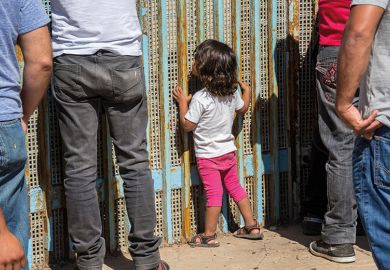The global pandemic has forced us all to reassess our educational models. Yet we must also use the crisis to reaffirm the long-established benefits of internationalisation and embed it even deeper within higher education.
Internationalisation in higher education has a history of contracting or plateauing amid global crises and then expanding again in times of recovery. We saw this happen after the fallout from the 9/11 attacks in the US and following the global economic downturn of 2008. We can expect a similar contraction and recovery process in this case, but it will also have its own distinctive pattern.
The need for virtual and remote learning – a current public health necessity – is pushing all institutions to become more digitally fluent. As we continue to promote global and diverse perspectives among our students, e-mobility experiences will very likely become an immediate alternative to traditional study-abroad programmes, whether for short-term study, a longer period or even a full degree.
Without question, approximating cultural immersion virtually will be a challenge, but what we learn by doing so might help us reshape the future of international education as we know it today. What we build now will not – and should not – replace traditional student mobility, but it might provide a paradigm shift that helps us rethink international education in a broader perspective.
Consider that two of our three campuses sit within a few kilometres of the US-Mexico border. Crossing borders is in our DNA, and in the DNA of our students. Yet this summer we’re preparing to run an entire international programme online, replicating traditional student mobility in an entirely digital environment.
It will not be perfect. And it will not be what we originally envisaged. But students will interact with peers from at least eight countries on four continents, and we’ll find new ways to create connections and a sense of belonging. Perhaps most important, our curriculum will get better.
My ultimate hope is that once global travel does bounce back, high-quality e-mobility programmes will help us augment in-person immersion experiences, while enhancing approaches to internationalisation at home. Together, they can help us develop a far more holistic approach to internationalisation.
Our enhanced digital fluency might also pay dividends when it comes to overcoming financial barriers to foreign study. We have an obligation to ensure that high-quality e-mobility programmes become the norm, particularly for students and institutions that lack the resources to fund global travel.
Students, regardless of their means, should have access to at least some essential elements of internationalisation. And beyond the informal – but real – benefits of cultural awareness and exchange, we should explore ways to provide credits or certificates specifically for e-mobility coursework.
Expanding virtual mobility as a response to a global crisis need not be a temporary diversion from “true” internationalisation, but an opportunity to deepen its influence and extend its reach.
It might also be instructive for leaders to consider the unique challenges and opportunities of this moment alongside the benefits we so often attribute to internationalisation in higher education. In its 2019 survey, the International Association of Universities reported that global higher education leaders repeatedly cited “enhanced international cooperation” as the most fundamental benefit of widespread internationalisation. Respondents in North America picked “increased international awareness of/deeper engagement with global issues” as the top benefit.
This crisis is forcing us all of our universities to make changes – grounded in our specific missions – to meet the unique needs of our students. We are rapidly responding in a variety of ways, regardless of our size, type or context. Some of these changes will be only temporary, but others hold the promise of enhancing our long-term approaches.
What we learn from this moment will help ensure that we cultivate graduates in the future who are uniquely equipped to collaborate across borders and across cultures – perhaps in ways that would been particularly helpful to all of us living through the current crisis.
Fernando León Garcia is president of CETYS University, a private, non-profit university in Mexico. He is also president-elect of the International Association of University Presidents.
Register to continue
Why register?
- Registration is free and only takes a moment
- Once registered, you can read 3 articles a month
- Sign up for our newsletter
Subscribe
Or subscribe for unlimited access to:
- Unlimited access to news, views, insights & reviews
- Digital editions
- Digital access to THE’s university and college rankings analysis
Already registered or a current subscriber?








